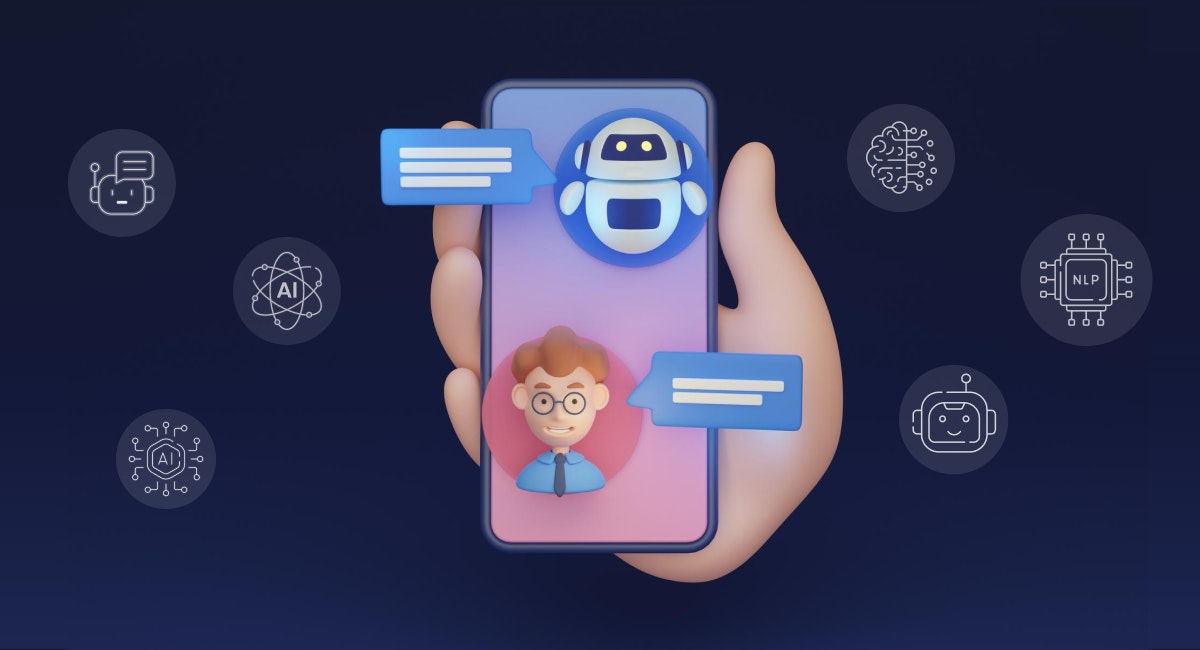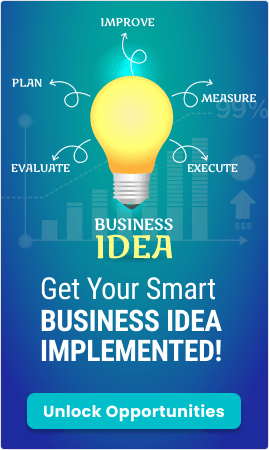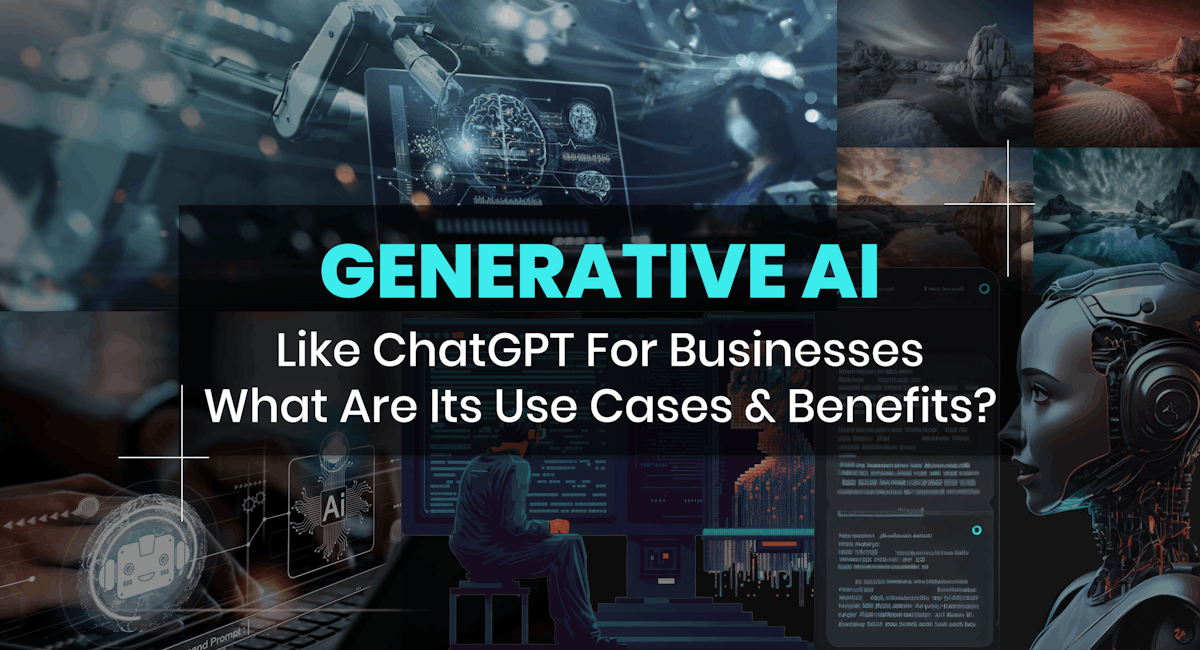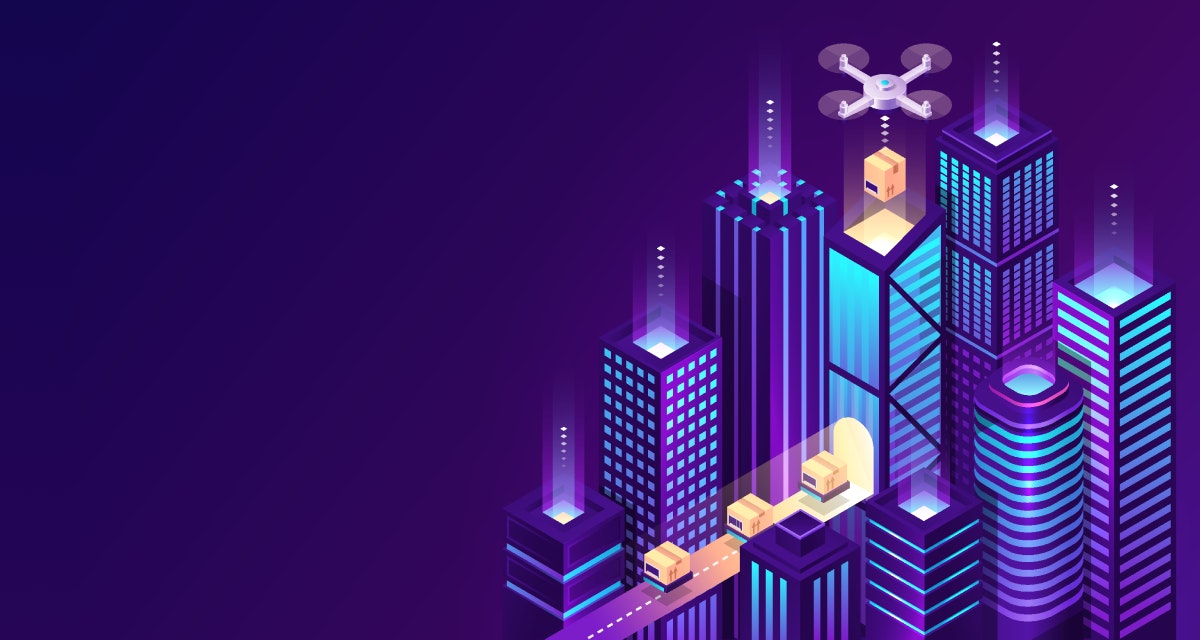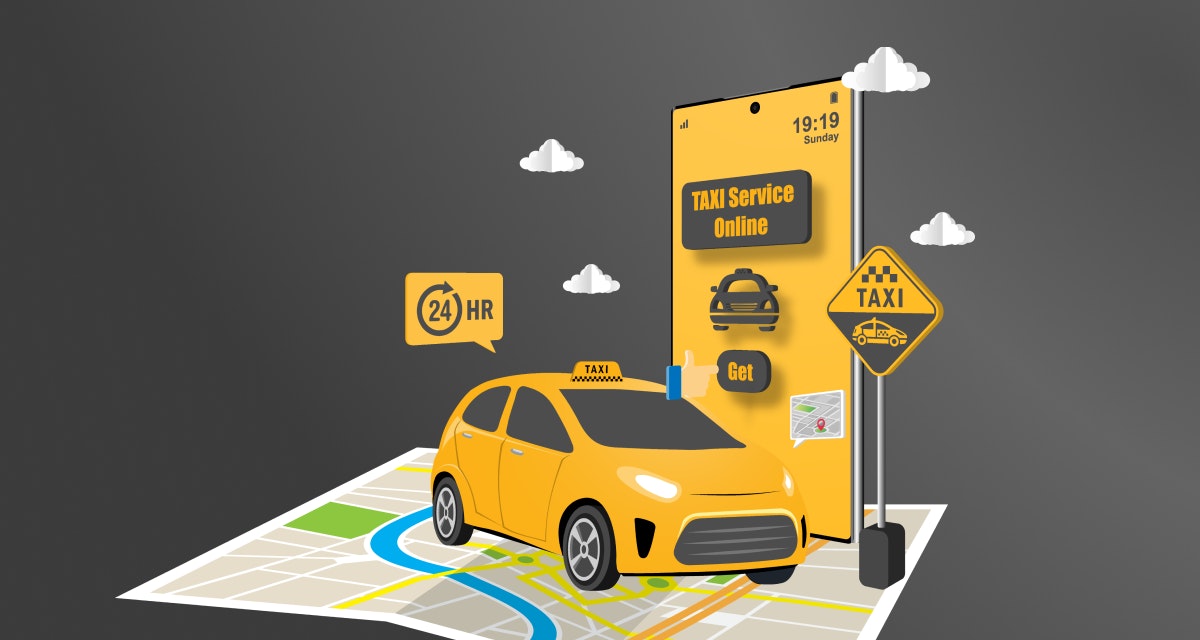Table of Content
The business infrastructure is growing at flash speed. In the past decade, numerous trends and technologies have elevated the business competition so much that almost every company faces a run for its money at certain times. Technologies like AI, Big Data, 5G, IoT, and many others are key promoters of business growth.
One of the technologies that have significantly impacted the business landscape is chatbots, aka AI chatbots.
So, if you plan to harness the ability of an AI chatbot for your business, read this guide carefully!
What is an AI chatbot?
An AI chatbot is a program that leverages the power of AI and numerous other technologies and data to provide appropriate human-like responses to its users.
The chatbot aims to interpret the natural language queries from the users and generate appropriate responses in return.
AI chatbots have applications in various application domains, such as information retrieval, customer service, virtual assistants, etc.
Some of the best examples of AI-based chatbots are Slush, Cortana, Siri, etc. If we go onto some advanced chatbots, they are ChatGPT, Google Bard, Jasper, etc.
How AI chatbots differ from traditional chatbots
AI chatbots stand out from traditional chatbots due to their ability to understand and respond to complex human inputs with greater accuracy. While traditional chatbots operate on predefined scripts and keywords.
Key differences between AI chatbots and traditional chatbots:
- Learning capability: AI chatbots continuously learn from interactions, whereas traditional chatbots rely on static programming.
- Language understanding: AI chatbots use NLP to process complex queries, while traditional ones handle limited, rule-based queries.
- Personalization: AI chatbots offer tailored responses based on user context; traditional chatbots provide generic, pre-set answers.
- Flexibility: AI chatbots adapt to various scenarios and multi-turn conversations; traditional chatbots struggle with deviations from their script.
- Integration: AI chatbots integrate with multiple data sources to provide real-time, accurate solutions, unlike traditional bots with limited integrations.
Benefits of AI chatbot development for business owners
1. 24/7 availability
Chatbots never take a break, ensuring your customers get instant responses anytime, day or night, even during weekends and holidays. In fact, 50% of executives cite 24/7 availability as a top benefit of AI chatbots.
2. Cost-effective support
By automating repetitive tasks like answering FAQs or tracking orders, chatbots reduce the need for large support teams and reduce customer support costs on hiring, training, and operations by 30%, says G2.
3. Scalability made easy
Whether you’re handling a handful of inquiries or thousands during peak hours, chatbots can manage multiple conversations at once without delays or errors, ensuring a consistent customer experience.
4. Increase sales and conversions
Chatbots can engage with customers proactively, recommend products, and answer questions in real-time, guiding their purchasing process. Chatbots can enhance lead generation and conversion rates. Notably, 36% of companies utilize chatbots to improve lead generation.
5. Get actionable customer Insights
Every interaction is an opportunity to gather valuable customer data. Chatbots analyze these interactions to provide insights into customer behavior, preferences, and common pain points, helping you refine your services and marketing efforts.
Real-life applications of AI chatbots across industries
AI chatbots have revolutionized business operations across various industries, providing efficiency, cost savings, and improved customer experiences.
By leveraging natural language processing and machine learning, these intelligent systems are capable of handling diverse tasks, from customer support to operational automation just like multi-AI agent systems.
Here’s how different industries are capitalizing on AI chatbots:
E-commerce
Offering real-time product recommendations based on browsing behavior
Automating abandoned cart recovery with personalized reminders
Upselling and Cross-Selling to boost selling
24/7 customer support to solve queries
Healthcare
Automating appointment scheduling and follow-ups
Symptom assessment and preliminary diagnosis
Personalized health and diet guidance using conversational bots
Automatic medication reminders and tracking
Financial services
Personalized financial advice and recommendations
Detecting fraudulent activities and alerting users
Providing instant account updates and transaction history
Offers credit scoring assessment
Travel & hospitality
Managing bookings, cancellations, and itinerary updates.
Providing destination recommendations and travel tips.
Supporting multilingual customer service for global travelers
Restaurant reservations and local activity recommendations
Education
Acting as virtual tutors for personalized learning experiences.
Providing instant answers to academic queries.
Monitoring student progress and recommending resources.
Automated mundane repetitive administration tasks
Legal
Drafting legal documents and contracts
Legal research and case summarization
Contract review and analysis
Litigation strategy and predictive analysis for case prediction
Types of AI chatbots - Latest and most relevant
There are several types of AI chatbots, with new variations and capabilities emerging frequently as the technology advances. Here are some of the most relevant and latest types:
Retrieval-based chatbots
These chatbots use predefined responses and rules to provide answers from a knowledge base. They are relatively simple but can be effective for narrow, well-defined domains. Examples: FAQ chatbots, and customer service chatbots.
Generative chatbots
These use natural language processing (NLP) and machine learning to understand queries and generate new, contextually relevant responses. They can handle more open-ended conversations. Examples: Anthropic's Claude, Google's LaMDA.
Task-oriented chatbots
Chatbots are designed to assist with specific tasks like booking tickets, making appointments, or providing recommendations. They use NLP and may integrate with backend systems. Examples: Travel booking chatbots, and scheduling assistants.
Conversational AI assistants
More advanced chatbots that can engage in freeform conversations, understand context and intent, and assist with complex queries across domains. Examples: Apple's Siri, Amazon's Alexa, Google Assistant.
Chatbots with multimodal interfaces
These combine conversational AI with other input modes like touch, voice, vision, and augmented reality for more natural interactions. Examples: Chatbots in AR/VR environments.
Emotionally intelligent chatbots
Incorporating emotional AI to detect and respond appropriately to human emotions and build rapport. Examples: Mental health counseling chatbots.
Chatbots for specific vertical industries or domain-specific
Chatbots optimized for use cases like healthcare, finance, e-commerce, etc. Examples: Medical diagnosis chatbots, and banking chatbots.
As AI capabilities advance, we'll likely see even more specialized and multimodal chatbot types emerge to provide seamless, intelligent digital experiences across industries.
Components for building an AI chatbot
As easy as it may seem to give the command to a chatbot and get the desired result, the actual work is much more complex in the backend. The working of an AI chatbot has numerous technologies and components backing it. Let’s take a look at those components!
There are two primary categories among which the A chatbot components are divided!
The UI components
Everything related to what a user sees and experiences comes in UI components. UI components include
- The user interface has all the visual components like buttons, text boxes, fields, etc.
- The user experience component includes the way things happen on the screen, like the navigation, animations, etc. Anything that improves the feel of the website.
- Conversation design is the third and the most crucial UI component. It focuses on developing the part about how the chatbot is going to interact or communicate with the users. The elements of a conversation design are flow and scripting. The flow part further includes context, entities, and intent that decide what the chatbot will say. The scripting part develops the chatbot's personality (like how the chatbot says something). In short, the conversation design includes uncovering conversation paths, responses, and fonts.
The functional components
The functional components behind an AI chatbot are much trickier than the UI components. Here are the functional components of the AI chatbot!
- Natural language processing is the most critical part of an AI chatbot. Generative AI and NLP help the chatbot understand user inputs, whether it is text or voice.
- Machine learning algorithms ensure that the chatbot is trained on the data. It is done via supervised and unsupervised learning.
- The knowledge base is the information repository that holds the information required by the chatbot to answer user queries. It can be product information, FAQs, etc.
- Dialogue management is another functional component of the AI chatbot. Dialogue management checks the flow of the conversation while taking care of the context, intents, and responses.
Generative AI Apps & Solutions Development Services Company
Explore nowHow to make an AI chatbot from scratch
When it comes to developing AI chatbots, you usually have three options
- Develop a custom chatbot
- Build a chatbot using ready-to-use tools
- The right amalgamation of both the above-listed options
Here are the 9 steps that help you create the right conversational flow and build a robust AI chatbot. Let’s begin the journey.
Step 1: Define chatbot purpose and use cases
AI chatbots can be used for different purposes and use cases. So the first step is to be very specific about your precise purpose and use cases for developing the bot. To understand your needs, you need to answer the questions listed below.
- What is your ultimate purpose for developing a chatbot? Do you want to improve customer experience, generate leads, automate customer support, or anything else? Your purpose could be one or a combination of multiple objectives.
- What are the most common chatbot use cases in your business and industry? Identify the use cases by checking for the queries you receive and evaluating potential examples in your domain.
- What are the essential features that you want to incorporate in the chatbot? You can decide on must-have features based on your business needs.
Once you have answers to the first two questions, it will be easy to define the features and type of chatbot you want to build.
Step 2: Decide a channel where you want to launch it
The next important step is to decide the channel where you want to integrate and use the chatbot. Ensure integrating it across every platform, where your customers frequently interact with your brand. The most common platforms that you should consider are
- Website
- Mobile Application
- Social media platforms like WhatsApp, Facebook Messenger, etc.
If you are confused about picking the right channels, here are some tips to consider
- You must integrate the chatbot on your website and mobile app as customer interactions happen frequently on these channels. People prefer to connect with you directly to get help with their queries.
- Large-scale companies have a large customer base that interacts with their brand through different channels. In such cases, deploying the chatbot on multiple channels is the right approach.
If you are a multi-national brand, you need to set the tone, style, and content of the chatbot by considering target audiences from multiple regions.
Step 3: Select the AI model or framework for your chatbot
Now that you have clarity about which chatbot variant you want to create and for what channels. The next step is to select the right technology stack. It is suggested to get help from experts to make the right decision.
- Ready-to-use AI builders are available in the market that allows to build a chatbot with the required customization. It's a less time-consuming approach.
- To build a bot with AI frameworks, you can consider platforms like Microsoft Bot, Google Dialogflow, IBM Watson, etc.
- You can develop a chatbot by leveraging cloud platforms like Microsoft Azure, AWS, IBM Cloud, Google Cloud Resources, and other platforms. It helps deploy, manage, and scale your machine learning workload and NLP engine.
- Using AI and ML platforms, you can build an AI chatbot from scratch. The platform offers various libraries and resources including Pyourch, Tensorflow, Scitkit, Pre-trained language models, Langchain, LLamIndex, PineCone.io, and more.
Step 4: Build a knowledge base
To make the AI chatbot smarter, you need to feed it with intelligent insights. It can learn and train itself using that data or knowledge base. If you are looking for where to get this information? You can consider three options that involve
- Internal Data
- Public Datasets
- Generated Data
Step 5: Design a user-friendly chatbot interface
Using drag-and-drop building blocks, you can design the conversation flow for the chatbot. It allows you to create chat sequences that meet your specific business needs.
For example; if you are an eCommerce company, you can set the sequence of sending a welcome message, asking for which product they are looking for, sharing the particular product page, sending a message that helps the customers to make a decision, and sending a discount message if applicable.
This is the basic conversational sequence that you can consider. Ensure to mention that they are using the AI chatbot. Also, add the clause of your website's privacy policy to avoid future conflicts.
Step 6: Train and fine-tune your AI chatbot
Companies that are opting for simple chatbots, developed using decision tree flows, do not need to train their product. When you need to understand the customer intent, you need to train the chatbot by adding an NLP trigger.
By training the bot, you can analyze the most common customer conversations, queries, and concerns. Adding the answer manually or using a tool will help you respond to their questions faster and more effectively.
Step 7: Integrate the chatbot and conduct rigorous testing
Once you are done with fine-tuning the AI chatbot, you can integrate it into your defined channels. To check whether it works smoothly, you need to test the chatbot.
You can receive a preview link from the AI chatbot development company. It gives you an idea about your chatbot’s look and feel. To make any changes, you can share a change request with your technology partner.
Step 8: Collect feedback from users
Feedback from customers is essential to understand the impact of chatbots. You need to conduct an automated survey using the chatbot. Understand the satisfaction level of the users with your bot conversation and explore what changes they want. It helps you make the conversation more effective and smooth. Implement the changes suggested by the users to increase user interactions with your chatbot.
Step 9: Monitor chatbot analytics and improve it
Lastly, keep monitoring your chatbot activity. It helps you understand where your bot is lacking in delivering the best customer experience. You can identify those spots and improve them. Moreover, you can recognize the best part that works excellently for you. You can check where else you can apply that tactic in the existing conversation flow.
Following these steps, you can build a chatbot that empowers each interaction with the customers by sharing invaluable and precise information with them. It helps you drive better engagement and increase conversions.
How much does it cost to build an AI chatbot?
The cost of building an AI chatbot can vary widely depending on its complexity, features, and development process. Here is a breakdown of the cost:
1. Basic AI chatbot
- Purpose: Handles simple tasks like FAQs, customer support, or lead generation.
- Features: Rule-based responses limited NLP (Natural Language Processing) capabilities integration with website or messaging apps.
- Cost Range: $5,000–$15,000
2. Advanced AI chatbot
- Purpose: Offers personalized interactions, understands context, and performs multi-step tasks.
- Features: NLP for understanding user intent. Machine learning is used to improve integration with CRM, databases, or third-party tools over time.
- Cost Range: $20,000–$50,000
Read: How to Build Your Own Private LLM from Scratch
3. Enterprise-level AI chatbot
- Purpose: Serves large-scale organizations with complex workflows and high-security requirements.
- Features: Advanced conversational AIOmnichannel support (website, apps, social media) Integration with enterprise software (ERP, HR systems)data analytics and reporting Multilingual capabilities.
- Cost Range: $50,000–$150,000+
Read: How AI Agents automate complex enterprise level workflows across industries
Why Should Your Business Build Chatbots?
Find outConclusion
Chatbots have become a pivotal element of every business process today. And this has led to the advancement in numerous technologies racing to elevate the level of chatbots. The examples of ChatGPT and Google Bard are clear proof that the chatbot industry has witnessed a paradigm shift. In a scenario like this, for businesses that are still following primitive practices to serve their customers, it is time to invest in an AI chatbot.
Are you a business owner looking for an AI chatbot to streamline operations, boost sales, and enhance customer experience?
Book Your Free 45-Minute Consultation with Our AI Experts Today!
During this personalized consultation, our team will provide:
High-impact chatbot use cases for your business
Guidance on design, build, and deploy a chatbot solution
Roadmap to integrate chatbots into your existing systems
